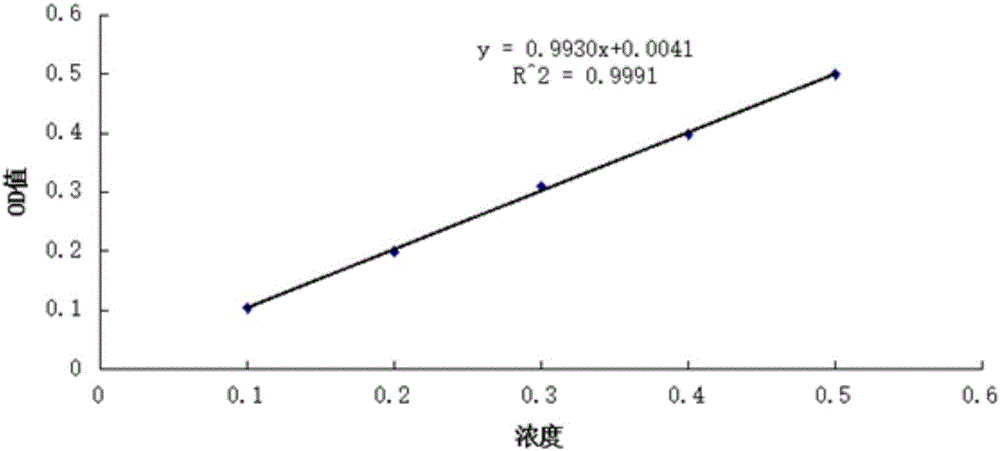Three-dimensional co-culture induction method of mesenchymal stem cells
A stem cell and co-culture technology, applied in the field of cell engineering, can solve the problems of separation of two co-culture cells, poor cell activity, long induction period, etc., and achieve the effect of increasing transformation rate, enhancing cell activity, and promoting growth and differentiation
- Summary
- Abstract
- Description
- Claims
- Application Information
AI Technical Summary
Problems solved by technology
Method used
Image
Examples
Embodiment 1
[0049] The three-dimensional co-culture induction method of mesenchymal stem cells provided by the present invention comprises the following steps:
[0050] 1. Isolation of mesenchymal stem cells and chondrocytes;
[0051] Air was injected into the marginal ear vein of New Zealand white rabbits to make them die. Use 75% alcohol to smear the limbs of the white rabbit to disinfect and reduce the pollution of rabbit hair.
[0052] 1) Isolation of mesenchymal stem cells;
[0053] Under sterile conditions, cut off the femur and coelom of the rabbit limbs, remove the skin tissue and retain the muscle connective tissue at the joint, and cut off the muscle tissue in the rest of the body. Soak the treated tissue in 75% alcohol, take it out after 30 min, wash it with sterile PBS, and place it in an ultra-clean bench. Expose the joint by cutting away the muscle at the joint with a sterile scalpel. Cut the joint with bone scissors, exposing the bone cavity. Use a disposable syringe t...
Embodiment 2
[0073] The difference from Example 1 is that Step 3 in this Example 2 is:
[0074] 1) Contains Fe 3 0 4 Preparation of granular sodium alginate solution A
[0075] Take magnetic nanoparticles Fe with a diameter of 20nm 3 0 4 Mix with sodium alginate in a 50ml centrifuge tube, initial Fe 3 0 4 The concentration is 10mg / ml. The mixed solution is shaken in an ultrasonic cleaner for 30 minutes, and then sterilized at 105°C for 20 minutes. It is prepared and used immediately.
[0076] 2) Embedding
[0077] Take the P3 generation mesenchymal stem cells in step 2, and resuspend to adjust the cell density to 2×10 7 each / ml, use a syringe to draw an equal volume of Fe-containing solution prepared in step 1). 3 0 4 Granules of sterile 20% W / V sodium alginate, mixed evenly with P3 generation mesenchymal stem cell suspension, at this time the cell density is 1×10 7 pc / ml, the final concentration of sodium alginate is 10% W / V, Fe 3 0 4 The concentration is 5mg / ml. Use a syring...
Embodiment 3
[0081] The difference from Example 1 is that step 3 in this example is:
[0082] 1) Contains Fe 3 0 4 Preparation of granular sodium alginate solution A
[0083] Take magnetic nanoparticles Fe with a diameter of 20nm 3 0 4 Mix with sodium alginate in a 50ml centrifuge tube, initial Fe 3 0 4 The concentration is 4mg / ml. The mixed solution is shaken in an ultrasonic cleaner for 30 minutes, and then sterilized at 105°C for 20 minutes. It is prepared and used immediately.
[0084] 2) Embedding
[0085] Take the P3 mesenchymal stem cells in step 2, and resuspend to adjust the cell density to 1×10 7 each / ml, use a syringe to draw an equal volume of Fe-containing solution prepared in step 1). 3 0 4 Granules of sterile 8% W / V sodium alginate, mixed with the suspension of P3 mesenchymal stem cells, and the cell density at this time was 5×10 6 pc / ml, the final concentration of sodium alginate is 4% W / V, Fe 3 0 4 The concentration is 2mg / ml. Use a syringe to absorb the mixtu...
PUM
| Property | Measurement | Unit |
|---|---|---|
| diameter | aaaaa | aaaaa |
| diameter | aaaaa | aaaaa |
Abstract
Description
Claims
Application Information
 Login to View More
Login to View More - R&D
- Intellectual Property
- Life Sciences
- Materials
- Tech Scout
- Unparalleled Data Quality
- Higher Quality Content
- 60% Fewer Hallucinations
Browse by: Latest US Patents, China's latest patents, Technical Efficacy Thesaurus, Application Domain, Technology Topic, Popular Technical Reports.
© 2025 PatSnap. All rights reserved.Legal|Privacy policy|Modern Slavery Act Transparency Statement|Sitemap|About US| Contact US: help@patsnap.com


